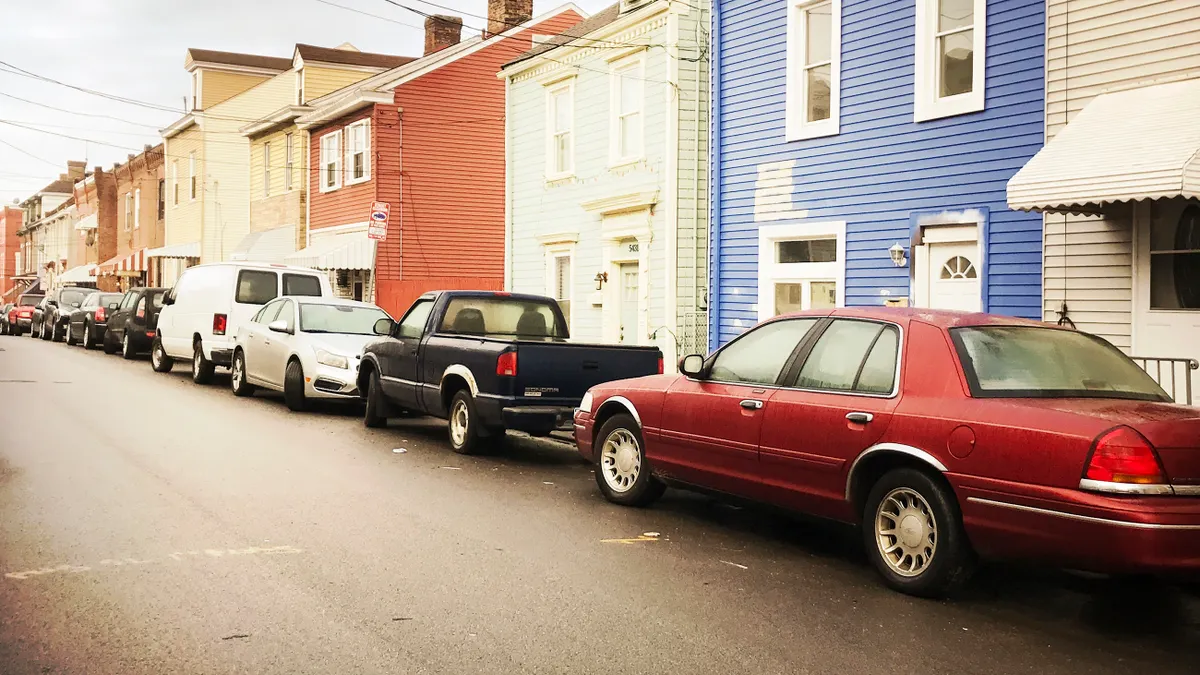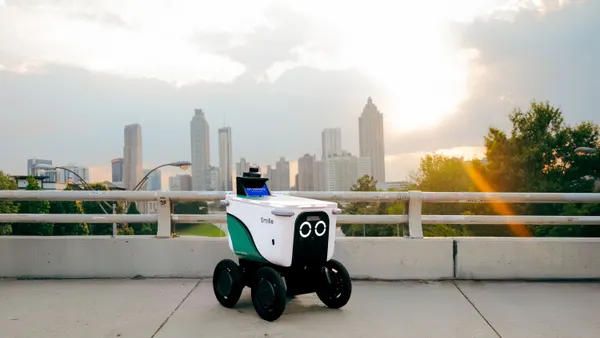Editor's note: The following is a guest post from Alex Goryachev, managing director of innovation strategy at Cisco.
When most people think of a smart city, notions of hyperloops, self-driving cars, ubiquitous Wi-Fi and countless connections to the internet of things (IoT) are what come to mind. However, new and exciting technologies are only one part of creating smarter, more sustainable and livable cities. The other part of the puzzle is nurturing a local environment of co-innovation, with collaborative innovation hubs as the centerpiece.
Today, innovation centers are popping up around the globe. From Google’s North America Tech Hub Network, to the National Science Foundation’s Big Data Regional Innovation Hubs, these hubs, centers, labs or communities – whatever you want to call them – bring together government agencies, enterprises, customers, start-ups, academics and researchers from local universities to explore and co-develop disruptive solutions to today’s pressing challenges.
The impact they have on their communities is impressive. For example, the American Underground startup hub in Durham, NC, has attracted more than $50 million in venture funding to the area, created 1,100 jobs and driven $1.4 million in spending towards local businesses over the past two years. At Cisco, our 11 co-innovation centers in major cities worldwide have spawned many dozens of digital solutions for our customer base globally while supporting the entrepreneurial community locally.
For any municipality, company, university or any other organization considering the development of a co-innovation hub, there are some proven best practices that can help ensure success. Based on several years of setting up and operating our global network of co-innovation centers, I’d like to share five lessons learned.
1. Focus on innovators, not innovations
First and foremost, place the focus on people, not technologies or even the physical centers themselves. Innovation is not simply about inventing new technologies, and innovation centers must be more than glorified showcases for product demos. Rather, innovation is a discipline and a mindset, aimed at driving new advances in business and improvements in the way we live. This does not necessarily mean developing new technologies or products. It can mean improving the delivery of social services in a community or improving the environment. For example, local governments can implement programs that enable self-driving vehicles or install smart street lights around a city; but these initiatives will not create a truly "smart city" unless local leaders, businesses and citizens work together to foster a city-wide culture that embraces innovation and pursues new ideas.
A wonderful example of this is occurring in Linz, Austria, where city officials worked with local and international partners to implement a connected rail solution originally developed in the IDEALondon innovation center. City officials' goal was to not only improve public transportation, but also positively impact the environment and provide citizens with more open access to information. By connecting its light rail trams and buses to the internet of things (IoT), the city of Linz has been able to reduce carbon dioxide output by more than 490 tons. Each tram and bus now also serves as a public Wi-Fi hotspot, providing more than 24,000 unique monthly users free Internet access. City officials view the data generated from all these connections as a public resource and make it available to local startups and developers, so they can use the information to create even more smart city solutions that will further benefit citizens.
By keeping the focus on the people and involving local officials, citizens and businesses, innovation centers can spur new ideas and develop joint solutions that can improve quality of life in a city.
2. Be selective
When considering where to establish an innovation center, do not pick the location arbitrarily. Choose a city with a strong entrepreneurial base, a mix of both start-ups and established businesses, academic institutions and local government leaders that have demonstrated their willingness to invest in innovation and growth in their communities. We’ve had success establishing co-innovation hubs in cities that serve as hosts for the Olympic Games. Leading up to the Games, these cities are already investing in new technologies, infrastructure and services. We work with them to plan for the long term, so their technology and infrastructure investments can continue to be leveraged long after the Games are over to deliver ongoing benefits to the host cities.
For example, after the 2012 Olympic Games in London, we helped the city repurpose the technology infrastructure to establish a co-innovation center that has helped more than 60 startups raise more than £70 million and has created more than 400 jobs. Leading up to the 2016 Olympic Games in Rio de Janeiro, we partnered with the local government to deploy a citywide, IoT-connected platform that enabled smart city services for the many upcoming visitors. Today, the technology remains, along with a local Innovation Center that continues to serve citizens and has helped dozens of startups and developers build new IoT solutions.
Don’t limit your sights to cities that are already known for innovation. Many mid-sized cities are well-positioned to become innovation hubs due to their mix of talent pool, local universities, strong entrepreneurial spirit and local governments’ willingness to embrace innovation and open data. A great example in the U.S. is Kansas City, MO. With a population of less than 500,000, it nevertheless aimed to make itself the smartest city in the world. Through a series of innovative, public-private partnerships, it has successfully turned itself into a living lab and created the largest connected block of cityscape in the world.
3. Align with local priorities
Innovation centers in different cities will each be slightly different by design and should focus on aligning with a city’s digitization strategy, as well as economic, industry and social priorities. When designing an innovation center, consider the local talent and their specific skillsets, as well as the city’s urban needs and the local government and academic leaders’ willingness to partner and participate with the innovation center.
This type of alignment is seen in the technological district in Buenos Aires, Argentina. Nearly a decade ago, city leaders aimed to improve the city’s lower-income neighborhoods while simultaneously jumpstarting the technology sector. They offered tax breaks to attract new businesses to these neighborhoods, encouraged private/public sector collaboration, invested in new technology infrastructure and improved security and transportation options in areas that had previously been heavily industrial and isolated. As a result, neighborhoods like Parque Patricos on the city’s south side have emerged as the country’s leading innovation hubs for technology and design, turning out successful startups and attracting multinational corporations to locate there.
However, priorities will vary from city to city and country to country. In Australia, a priority on agricultural technology has led co-innovation centers in Sydney and Perth to focus on creating more connected, IoT-enabled farming operations. Partnering with Australia’s Department of Primary Industry and national farming associations, these co-innovation centers are providing farmers with IoT-enabled sensors and data analytics platforms that drive better decision making to boost crops while cutting costs. While the focus on connected agriculture came from aligning with local priorities, the solutions developed in these co-innovation centers can easily be applied in the agriculture sector in other regions of the world for equally successful results.
When establishing an innovation hub, focus on co-developing solutions that not only align with local priorities, but that can also be replicated in other parts of the world. Areas of focus can range widely across horizontal technologies, such as networks, security, middleware and applications, or across different industries, such as manufacturing, transportation, energy, healthcare and others.
4. Cultivate a diverse and inclusive partner ecosystem
Breakthrough ideas and innovative new approaches to solving problems emerge when a diverse group of people with different backgrounds, experiences and skillsets collaborate together. The best innovation centers bring together an inspired mix of customers, partners, local government representatives, startups, academia, large enterprises and integrators across industries and technologies. Together, they can share space and ideas to co-innovate and deliver solutions to market. Doing so, they can engage hyper-local experts and draw from everyone’s different experiences and expertise to exchange best practices and apply insights that not only benefit the local community, but also be scaled worldwide.
A good example is the Mi-IDEA co-innovation center in Manchester, England, which brings together a robust ecosystem of local startups, universities, government research institutions and leading technology companies to create innovative, technology-based solutions to some of the most pressing challenges facing cities today. One of the largest projects to emerge from the Mi-IDEA co-innovation center has been CityVerve, a smart city demonstrator that is pioneering new uses for IoT technologies around Manchester to improve the delivery of healthcare services, create more efficient and safe transportation options, improve air quality and energy efficiency throughout the city, and much more. By bringing together an ecosystem of more than 21 organizations from the public, corporate, startup and academic worlds, CityVerve is not only developing innovative solutions for Manchester but also aims to serve as a blueprint for smart cities worldwide.
Innovation is a team sport, with each member contributing specialized know-how. The more an innovation center can bring together a diverse ecosystem of people and organizations to co-innovate together, the better the emerging solutions will be.
5. Nurture local startups and developers
Last but not least, innovation centers should provide tools, technologies, mentorship and guidance to bring startup ideas to fruition. Individuals, entrepreneurs and startups can have brilliant ideas, but without the necessary support, they will struggle to bring their ideas to life or scale their solutions in a way that can make a real impact. By bringing together an ecosystem of players, innovation centers enable startups to access the expertise of enterprise companies, local experts and representatives from government and academia, which helps foster a startup-friendly culture in the city for continued innovation throughout the future.
Hoxton Analytics is a London-based startup that benefited from such mentorship through the IDEALondon innovation center mentioned previously. The startup developed a solution that enables retailers to gain demographic and behavioral insights on shoppers as they move around a store, while protecting shoppers’ privacy, through IoT-enabled video cameras pointed a floor level. The company had a few successful pilot projects in place and data showed that their technology worked, but they needed the help of a large enterprise partner to provide the credibility, validation, customer introductions and a network backbone to scale into the market. They were able to gain this through the IDEALondon innovation center and today the solution is at 30 shopping centers and retailers throughout the U.K. and is growing fast.
Smart cities need more than new, hyper-connected technologies to progress – they need to create an innovation mindset among local businesses and citizens alike. By partnering together to establish hubs or centers that stimulate and nurture ideas from concept to reality, local governments and business leaders can co-create a lasting culture legacy of innovation that helps cities and their citizens thrive.

















